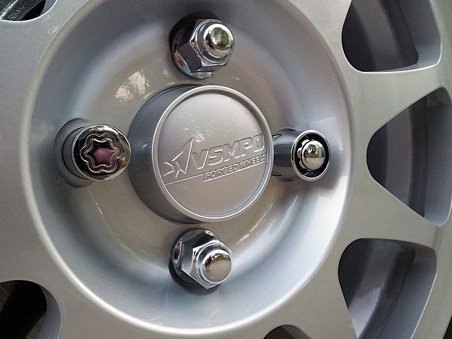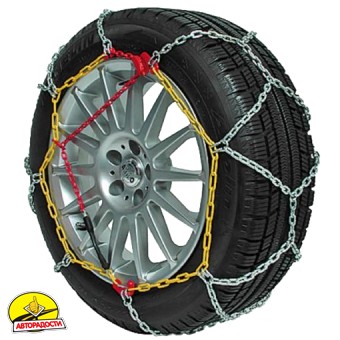
Wheel chains
Content
Under certain road conditions, the vehicle's own potential is insufficient. A snowy section of the road, a steep slope covered with an icy crust, a muddy section - chains mounted on wheels can help in all these situations. Such "accessories" for wheels endow the vehicle with off-road properties. The main task of snow chains for cars is to improve the adhesion of wheels to the road surface.
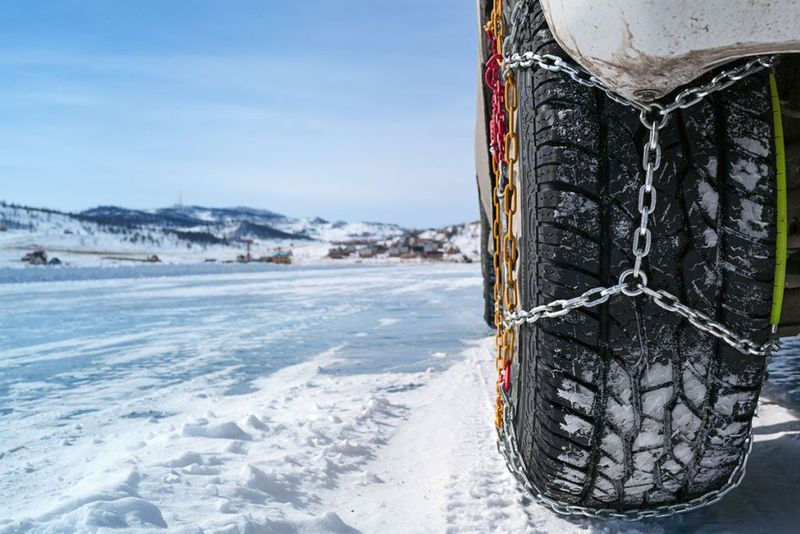
The purpose of the chains is to significantly increase the grip properties of the wheels
Snow chains - description
Functionally, wheel chains (or, to be more precise, snow chains) are essentially a removable tread that allows you to turn an ordinary road tire into an off-road tire. Structurally, it is a chain, often reinforced, connected to uniformly braid the tire around the entire circumference. This design consists of two longitudinal chains or cables, external and internal, passing around the circumference of the wheel, which are connected by transverse chains or rubber "stops".
The purpose of the chains is to significantly increase the grip properties of the wheels (and, consequently, the vehicle’s patency) on ice, loose snow, deep mud, etc. In practice, this may look like this. When you go fishing, you drive 100 km on an asphalt surface on ordinary tires, and then you turn onto a country road, where “difficult off-road” begins. The wheel chains are then attached and you can go further, much less likely to stall or get stuck in the mud. And places such as, say, icy steep climbs, without wheel chains, are extremely difficult to overcome even on studded tires.
Устройство
According to the structure of the anti-skid chains, the wheels are conditionally divided into soft and hard. Both the first and the second are two longitudinal chains or cables stretched around the entire circumference of the wheel. Pointed and rubber (plastic) ears are stretched between them.
Transoms can be located both in the form of rhombuses or honeycombs, and on a ladder. Each of the proposed options has in its arsenal certain positive advantages and disadvantages. The ladder has improved rowing capabilities. That is why this device is best used to overcome various kinds of areas with increased pollution. However, a wheel equipped with this type of snow chain also has certain disadvantages, as it is prone to sag.
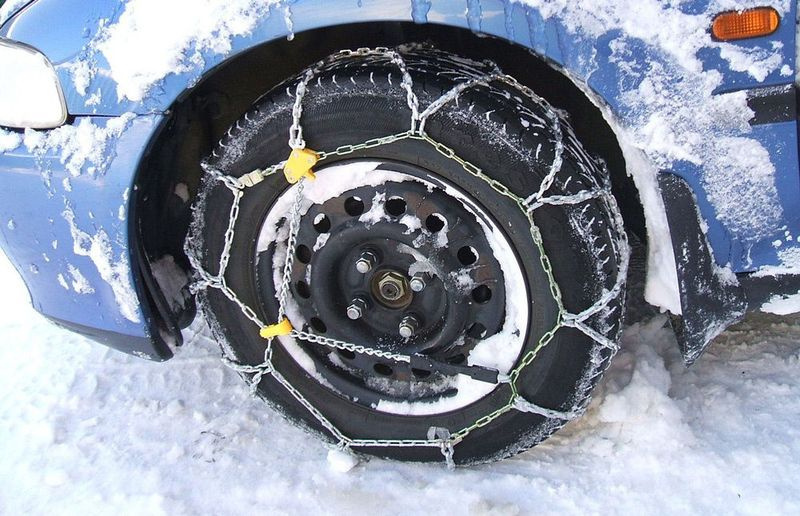
Snow chains with a honeycomb pattern are more versatile
Therefore, riding on such shod wheels is only possible to “drive in”. There are other hazards that can adversely affect a motorist's vehicle in some way. First, there are conditions for increased tire wear. Also, when driving on such wheels, the lateral stability of the car will be very low. And in conclusion, in the most negative way, these devices affect the steering and gearbox. This is due to the fact that the use of snow chains places heavy loads on these systems.
Snow chains with wheels having a honeycomb pattern are more versatile and have an order of magnitude less negative impact. In addition, the components of the car will not succumb to such high loads, and the tires will last much longer. Unlike ladders of this type, braces can provide excellent lateral stability of the vehicle, as there is constant contact with the surface during movement.
Disadvantages
Yes, due to the chains, the car's patency increases, but the handling worsens. The machine becomes like a tractor, the permitted speed of its movement is reduced. In addition, the car acquires a noticeable oversteer. Therefore, before setting off on a journey, it is recommended to adapt to new sensations in normal conditions.

Chain use affects tire wear
In addition, the following factors can be attributed to the disadvantages of chains:
- the use of chains affects tire wear;
- chains make a lot of noise when moving.
If you are choosing between types of snow chains, the rubber ones are the ones to go for. Driving performance will be worse, but the impact on tires and other elements will not be as detrimental. And the speed of movement is still comfortable.
Production
It is not always possible to buy an anti-slip device - the high price and the lack of the right size force car owners to solve these problems on their own. I must say that this is a very good option - all the necessary components are always available in hardware stores. In a critical situation, you can try to simply wrap the tire with wire or a piece of metal equipment, but not everyone carries such a kit with them. Also, for a disc-type brake system, this option is categorically contraindicated; such a design will disrupt the operation of the mechanisms.
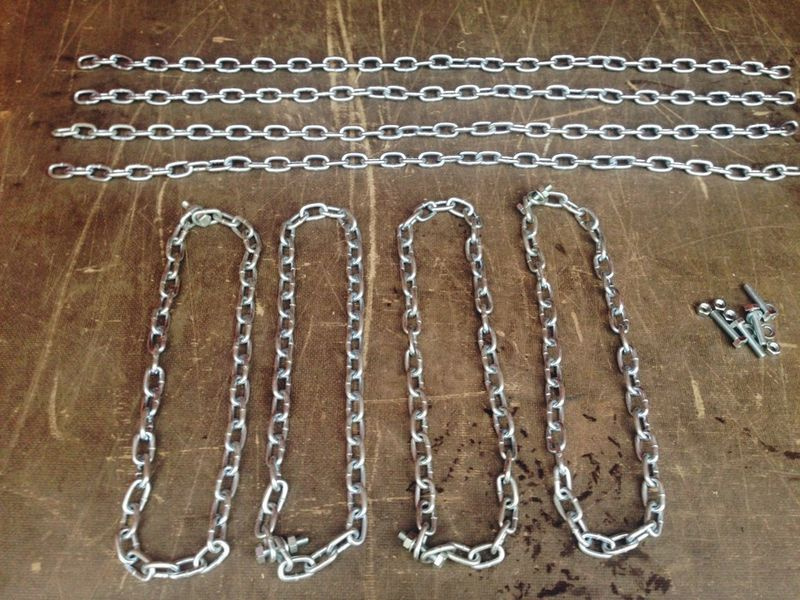
Therefore, it is worthwhile to prepare in advance home-made chains for wheels, for which you will need:
- steel chain with a cross section of at least 5 mm;
- arms;
- swivel carbines;
- stretching device;
- bolts, nuts and washers.
The dimensions of the blanks depend on the dimensions of the tire used, so it is important to pre-measure the desired indicators. The number of crossbars is also individual: the craftsmen recommend ensuring that there are two "crossbars" at once in the plane of contact of the tire with the ground.
Thanks to this scheme, traction characteristics and reliability of the entire product will increase. The process of preparatory actions and assembling chains on wheels with your own hands consists of the following points:
- cutting of longitudinal blanks;
- cross cutting;
- fix the transverse element on the sixth link of the longitudinal chain;
- installation of subsequent "crossbars" every 9 links using rings or hooks;
- in the middle of the longitudinal workpiece, fix a segment consisting of 6 links and a lanyard with a hook.
As can be seen from the description, with a certain skill and tool, the operation will take no more than 40 minutes. Those who have welding experience can put it into practice and abandon threaded connections, which will certainly affect the quality of the equipment.
How to put on chains

There are two ways to put chains on a wheel:
- The first option involves the use of a jack. With its help, the car rises, a lug is installed on the suspension wheel. Finally, the reliability of fixation is checked and the procedure is repeated for another tire.
- The second method suggests placing the chains in front of the wheels, leading them to the middle and first securing the inside, then the outside. Next, you need to evenly distribute the links, drive about 20-30 meters, stop and adjust the tension.
If the car has four-wheel drive, chains are installed on all wheels. In other cases, it is enough to wear them only on the leaders.
Snow chains will help in extreme conditions. But if the vehicle is operated within the city, it is enough to install special studded tires.
Tips for using
Refrain from exceeding the maximum speed (indicated by the manufacturer), sudden braking, making sudden maneuvers. Move and increase speed smoothly. Otherwise, the chain will quickly fail.
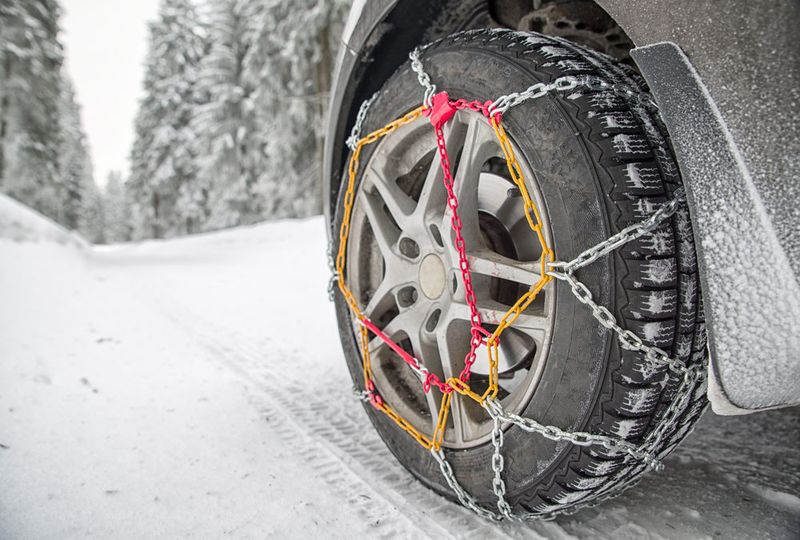
Chains are installed on tires with a normal level of pressure. Do not reduce tire pressure when installing chains; this will increase the risk of breakage.
If the chain is damaged, stop immediately and remove it. Otherwise, such a chain can seriously damage the wheel, parts of the brake system or suspension.
Before each installation, carefully inspect the chain: locks and links must be in good condition.
History of snow chains
For the first time chains on wheels in their usual form appeared during the First World War. It was then that, in order to increase the patency, chains began to be attached to the wheels of ordinary trucks, which greatly expanded the possibilities of operating the car in the most difficult road conditions.
Until recently, this accessory was well known to drivers of heavy vehicles, especially those working in the Far North, as well as extreme jeepers who really like to overcome the most difficult, almost impassable tracks.
Today, this accessory is well known to a wide range of motorists, especially those who often have to drive in difficult conditions: fishermen, hunters, agricultural workers, residents of rural areas, where, as you know, the quality of roads leaves much to be desired and many other categories of drivers.

